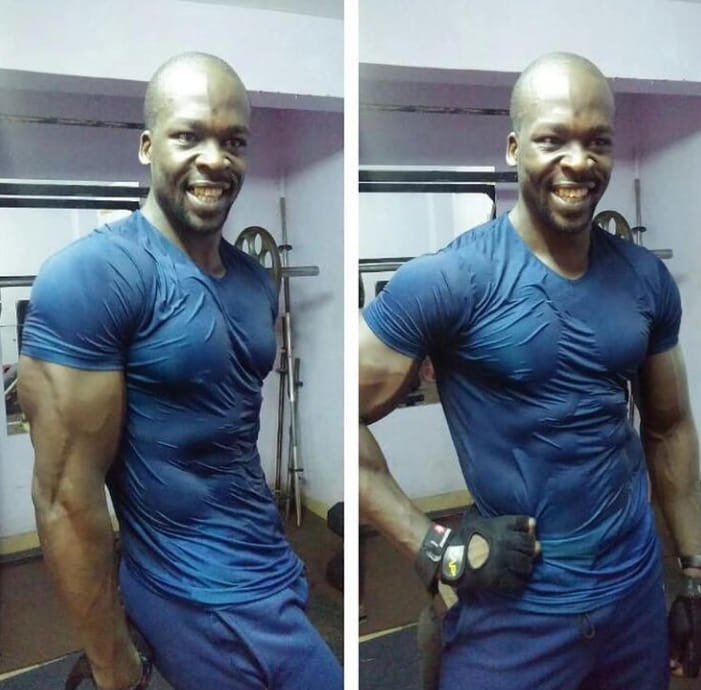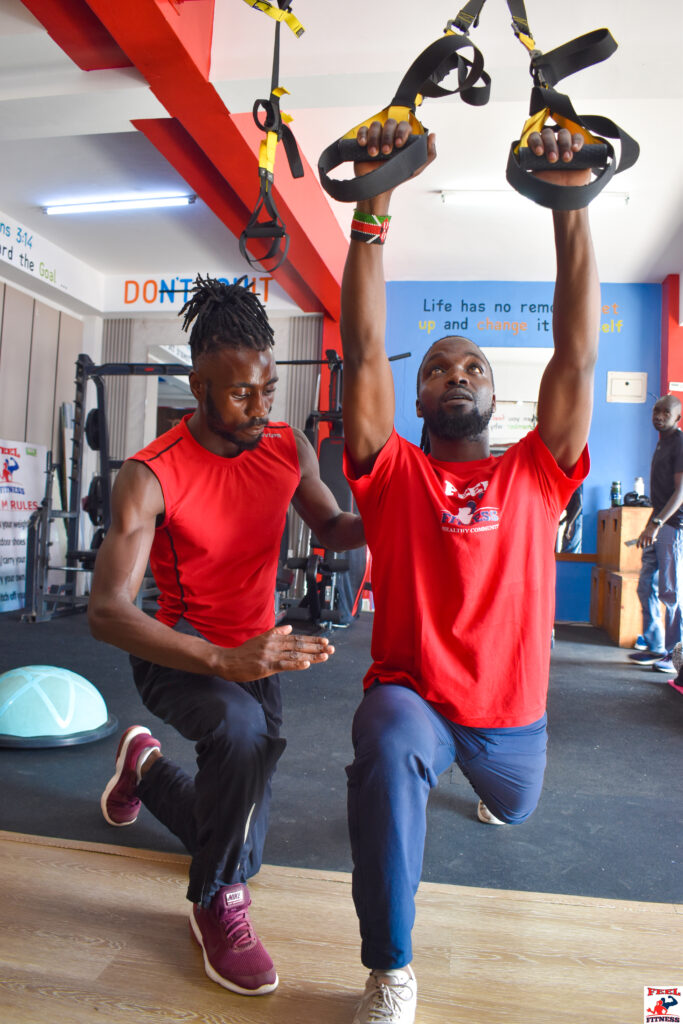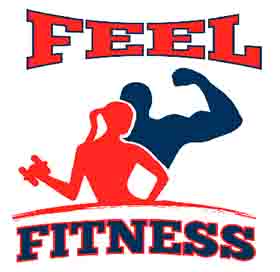Ever feel like your body’s holding onto fat like it’s saving for a rainy day? You’re not alone—and no, your metabolism isn’t broken, lazy, or out to get you. In fact, it’s working all the time, even while you’re asleep, scrolling your phone, or claiming you’re “just resting your eyes” mid-Netflix. Metabolism is your body’s internal engine—quietly powering everything from your heartbeat to your hustle. But here’s the kicker: most people don’t understand how it really works, so they try to “fix” it with extreme diets, endless cardio, or skipping meals (spoiler alert: none of those help). It’s time to lift the hood, understand what actually fuels your fat-burning machine, and learn how to boost it—without going crazy in the process.
Think of metabolism like your body’s engine. Whether you’re running a marathon, chasing matatus, or just Netflix-bingeing while “resting your eyes,” it’s working 24/7 to keep you alive.
Feel Fitness.
What Is Metabolism, Really?
Your body is basically a 24-hour chemistry lab. Every second, countless chemical reactions are taking place to keep you alive—turning food into energy, repairing cells, regulating temperature, and eliminating waste. As some of these reactions break things down to release energy (we call this catabolism) while others use that energy to build muscle, enzymes, and tissues (anabolism).

Together, these processes make up your metabolism—the sum total of all the life-sustaining magic happening under your skin. And guess what? Exercise has a powerful effect on these reactions. It doesn’t just burn calories while you move—it also resets the pace at which your whole system runs, long after your session ends.
The Metabolism Engine: 3 Main Parts
1. Basal Metabolic Rate (BMR) – 60–70%
Did you know that most of the calories you burn each day don’t come from your workouts? Yep, not your morning run, your gym session, or even that intense spin class. The real calorie-burning champion is what your body does when you’re doing absolutely nothing. Just breathing, thinking, blinking, and keeping your organs running burns more energy than most people realize.
It’s called your Basal Metabolic Rate (BMR)—and it accounts for up to 70% of your total daily calorie burn. Wild, right?
2. Thermic Effect of Food.
Let’s talk about something your body secretly charges for: digestion. Yep—eating burns calories too! This behind-the-scenes process is called the Thermic Effect of Food (TEF), and it accounts for about 8–12% of your daily energy use. Your body uses energy to chew, digest, absorb, and store the nutrients from everything you eat. And guess who’s the most demanding at the metabolic checkout counter? Protein. It burns up to 30% of its own calories just being processed. That means when you’re enjoying that juicy grilled chicken breast, your body is already hard at work—and you didn’t even have to break a sweat. Think of it as the only time you can burn calories while sitting down and chewing proudly
3. Activity Thermogenesis – 20–30%
I help my clients understand that calorie burn doesn’t just happen in the gym. It comes from two main sources. First, there’s Exercise Activity Thermogenesis (EAT)—your planned workouts like strength training, a morning run, a boot-camp session, or playing five-a-side football on Saturdays.

But the real game-changer is what most people overlook: Non-Exercise Activity Thermogenesis (NEAT). That’s all the unplanned, everyday movement—walking the dog, cleaning the house, pacing during phone calls, even fidgeting at your desk. I once challenged a client to walk around their house every time they were on a call—and by the end of the week, they’d unknowingly clocked over 10,000 steps a day! NEAT can vary by up to 2,000 calories between individuals—that’s a whole meal (or two) just from moving more.
So yes, I encourage you to park farther from the entrance, carry your own groceries, or dance while doing dishes. The more you move throughout your day, the more your metabolism stays fired up.
Coach Philip.
What Affects Your Metabolism?
Here’s what truly impacts how fast or slow your internal engine runs:
a) Age
As we age, our metabolism naturally slows down due to reduced hormone production (like testosterone, estrogen, and growth hormone). Muscle mass declines too—but it doesn’t have to! Staying active into your senior years is key to keeping your engine humming.
b) Exercise

Exercise pays off in ways that no mirror or scale can fully capture. It’s not just about how you look—it’s about how your body functions. Strength training, in particular, is a game-changer. It builds and preserves muscle, which is your body’s most efficient calorie-burning tissue. The more muscle you carry, the higher your resting metabolic rate becomes, meaning you burn more calories even when you’re lounging, sleeping, or sitting in traffic. But it doesn’t stop there—all movement matters. That evening walk, those stairs you chose over the lift, dancing while doing chores—they all count. The key is consistency. When you make exercise a lifestyle—not just a 30-day challenge or a quick fix—you turn your body into a high-performing, fat-burning machine. It’s not about perfection; it’s about showing up for your health every day in small, meaningful ways.
The more muscle you build, the more your body works for you—even when you’re not working out. You’re literally turning yourself into a fat-burning machine!
Feel Fitness Center.
c) Water Intake
Water improves circulation, boosts digestion, and helps every metabolic process run smoothly. Think of it as the coolant for your internal engine. Drink up!
d) Sleep
Skimping on sleep slows your metabolism, messes with your hunger hormones, and increases cravings. Quality rest is not a luxury—it’s a metabolic must-have.
e) Environment
On cold days, your body burns more energy trying to stay warm. Same goes for extreme heat. That’s why temperature can influence your calorie needs.
f) Lifestyle Habits
Skipping meals or crash dieting tells your body to conserve energy—basically flipping the “low battery” switch. Metabolism slows down to preserve fuel.
g) Gender
Men usually have more lean mass and larger body size, giving them a 10–15% higher metabolic rate than women. Blame biology, not your partner’s second plate.
h) Genetics and Body Size
Big bodies burn more fuel. Larger organs, more blood volume, and higher lean mass means a higher BMR. And yes—your genes play a role too.
Busting Common Metabolism Myths
Let’s bust a big one first: “My metabolism is broken.” Nope. It’s not broken—it’s just very efficient (some might say too efficient). The truth is, most people underestimate how much they eat and overestimate how many calories they burn—especially after one gym session and three sit-ups. Your metabolism isn’t out to get you; it’s just running on facts, not feelings.
And while we’re at it—cardio lovers, listen up: doing endless treadmill sessions might burn calories in the moment, but it won’t do much for your metabolism once you’ve peeled off those sweat-soaked clothes. Strength training is the real MVP here—it builds muscle, and muscle is like a little internal furnace that keeps burning energy even when you’re doing absolutely nothing (like when you are watching your favorite show).
Oh, and eating six tiny meals a day? Your metabolism doesn’t count them like attendance—it only cares about total calories. Whether you graze like a goat or feast like a lion, it’s the what and how much that matters, not the how often.
Feel Fitness.
How to Boost Your Metabolism (Without Losing Your Mind)
Whether you’re looking to lose fat, gain muscle, or feel more energized, here’s your cheat code:
On Weight Loss Program:
- Create a sustainable calorie deficit (not starvation)
- Focus on strength training to maintain muscle
- Increase daily movement (walk, fidget, dance!)
- Prioritize sleep and protein
For a Weight Gain Program:
- Eat more consistently—even when not hungry
- Don’t skip strength training
- NEAT may be high—be intentional with fueling.
If You Aim For Improved Performance:
- Fuel adequately before and after workouts
- Sleep and recovery are essential for metabolic adaptation
- Undereating tanks both performance and metabolism.
When to Refer to a Doctor
I remind my clients that what feels like a “metabolism problem” is often just their body doing its job efficiently—or responding to poor habits like skipping meals or skimping on sleep. But when I spot red flags, I don’t guess—I refer. If someone tells me they’re feeling constantly tired despite getting rest, dropping or gaining weight too fast, freezing while the rest of us are sweating, or losing hair (and patience), I take it seriously. And if I notice signs of disordered eating, I don’t try to fix it—I connect them to a qualified professional. I’m here to coach, not diagnose, and I know when it’s time to tag in the real medical pros.
Final Takeaways
- Your metabolism is smarter than you think—it’s adaptive, not broken.
- Muscle is your metabolic gold—build it, keep it, feed it.
- Movement doesn’t have to be gym-time. Daily activity matters!
- Sleep, food, and water aren’t optional—they’re your fuel.
- Be consistent. Extreme measures rarely win the long race.
Client Conversation
Client: “Phil, I think my metabolism is slow—I barely eat anything and can’t lose weight.”
Me: “Let’s look at it together. Your metabolism is likely working perfectly—it’s just efficient. Instead of cutting more food, let’s build muscle, track your intake, and add daily movement. Your engine’s not broken—we just need to work with it smarter.”
Your body isn’t a machine that needs punishment. It’s a high-performance engine that needs proper care, fuel, and movement. Treat it well, and it’ll burn strong for years to come.
Coach Phil.

